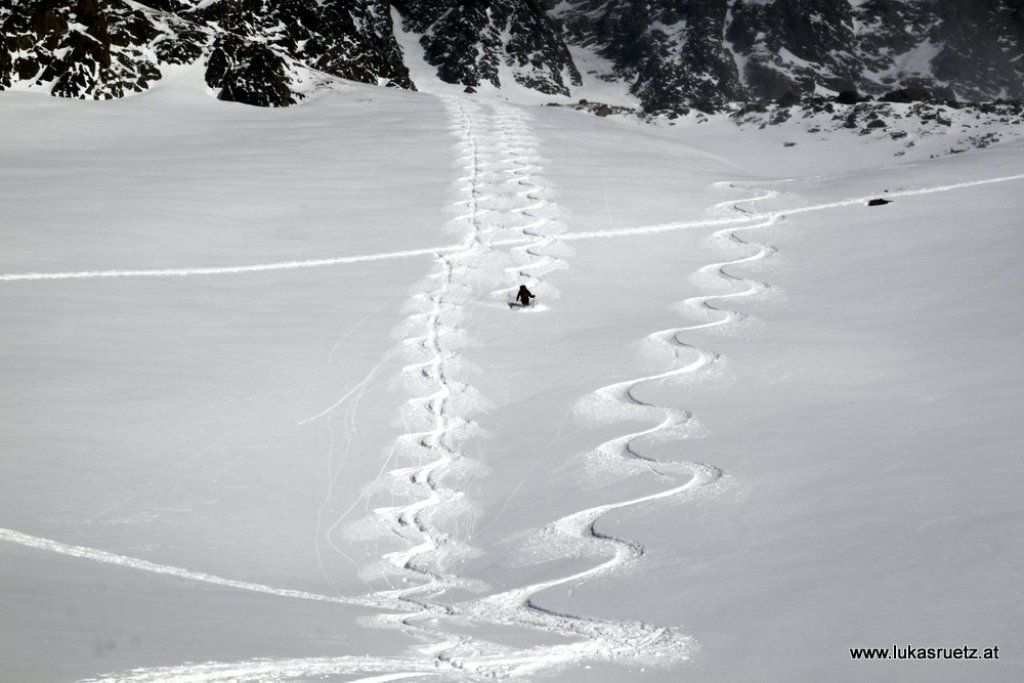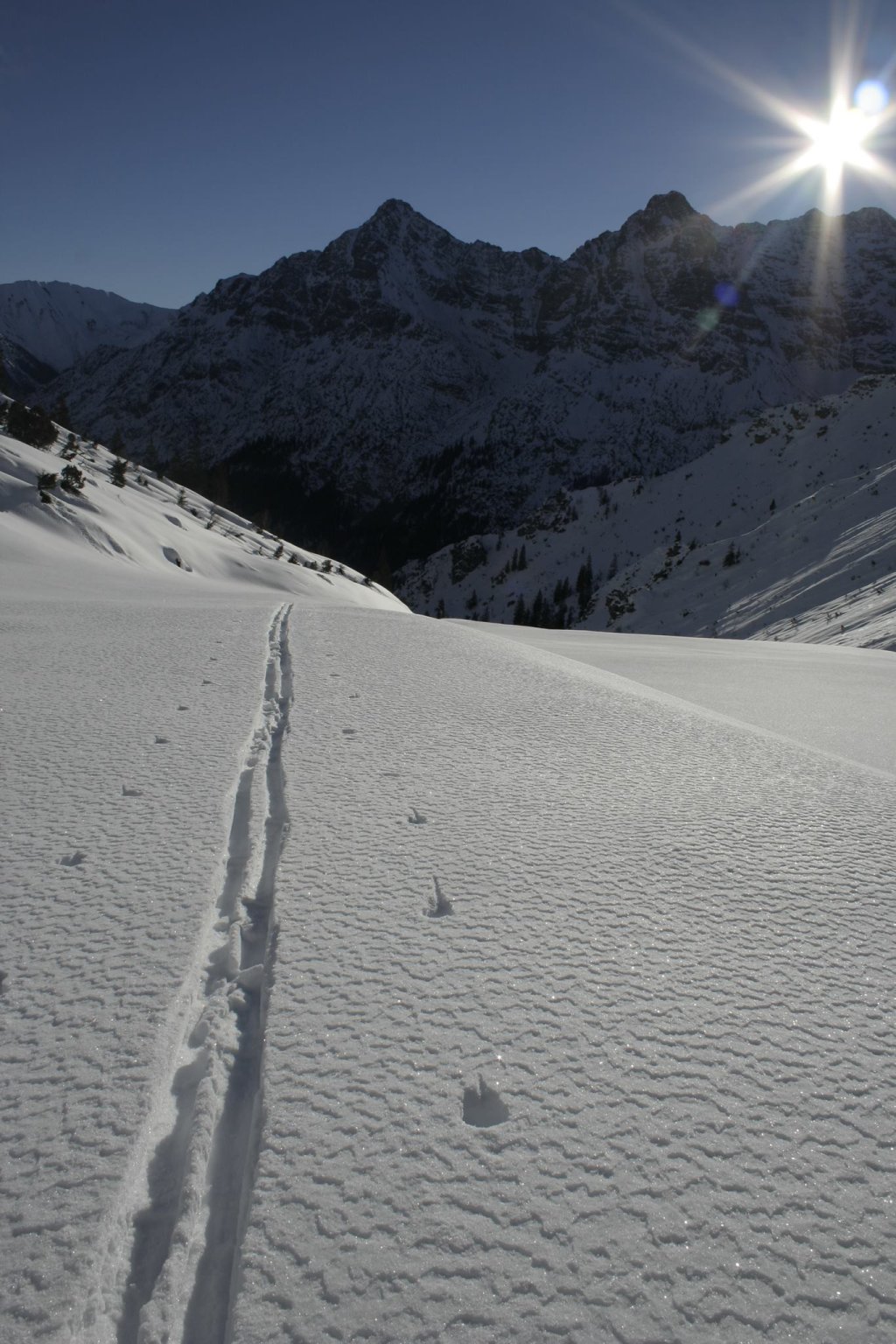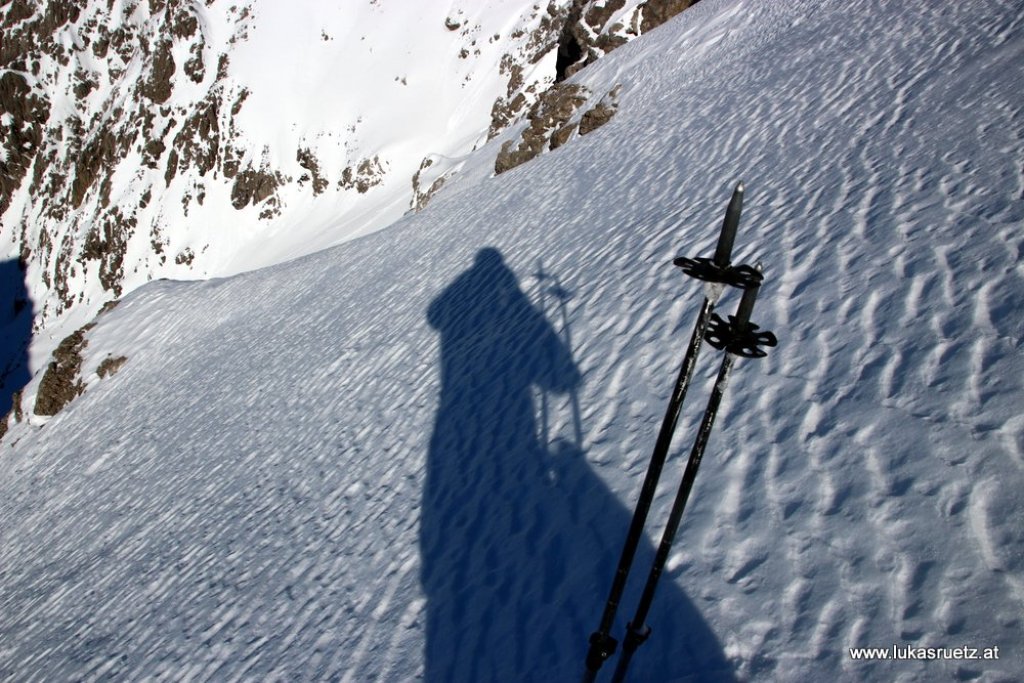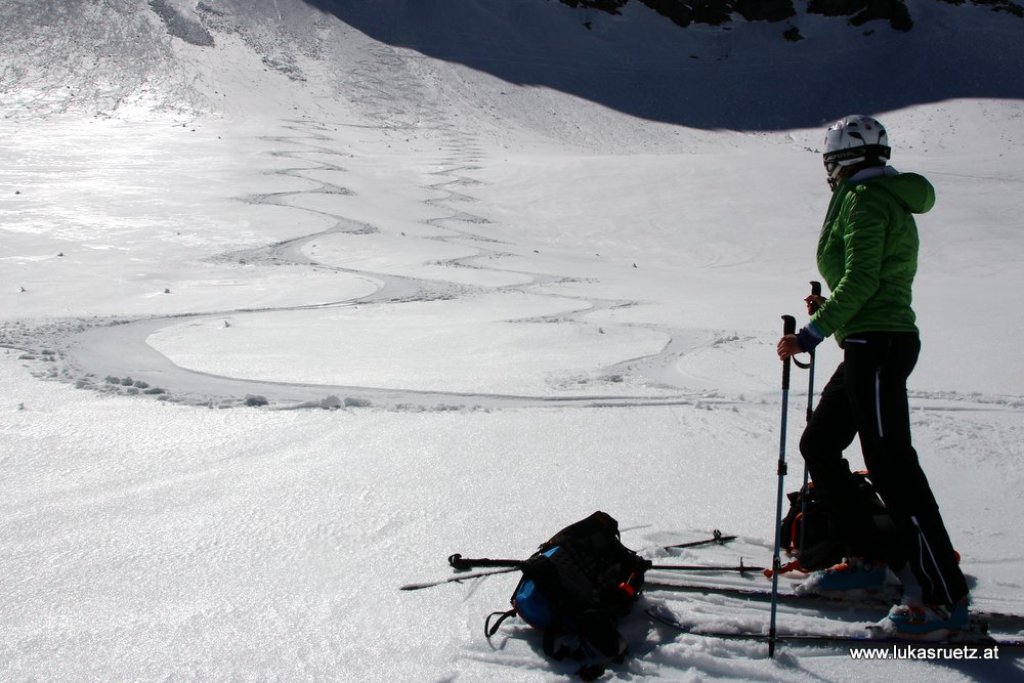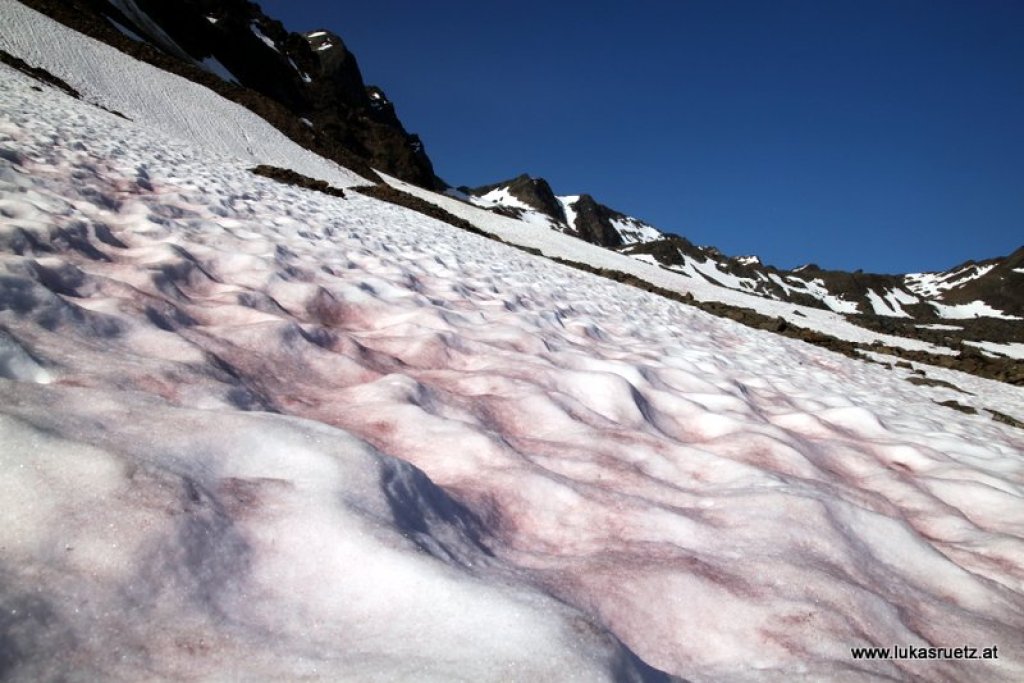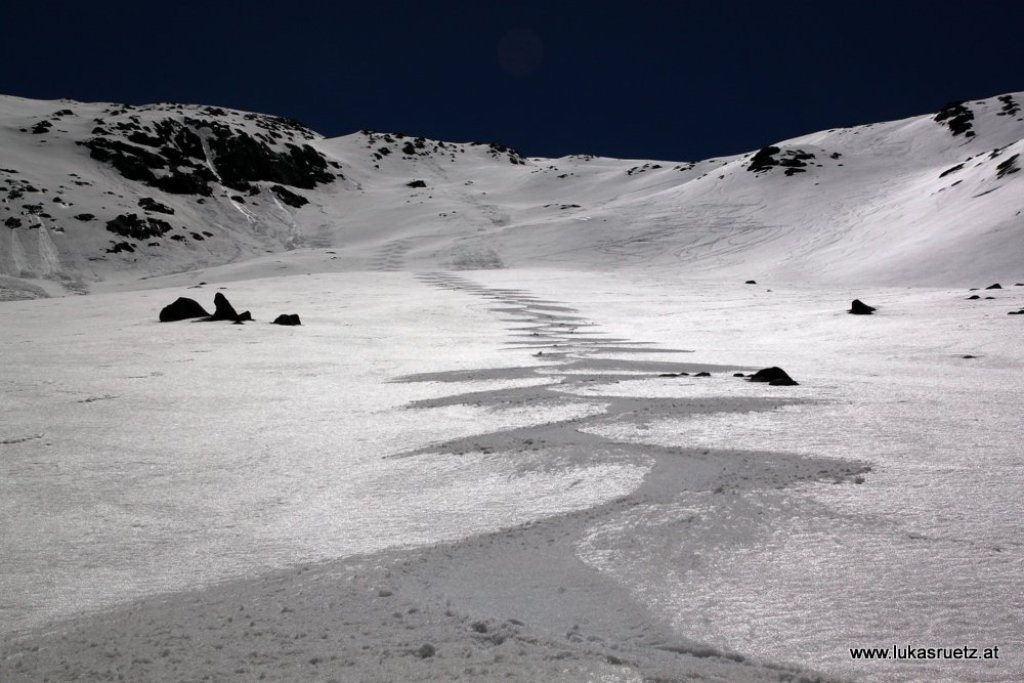Natural layer
The first season with the SnowFlurry characterized by some basic education, especially in terms of weak layer formation and the old snow problem. The snow flurries were intended to provide a little more understanding of the fact that snow slab avalanches occur due to a fracture in a weak layer, followed by the sliding of the weak layer and snow slab on a harder sliding surface (an underlying layer of snow or, in the case of a weak layer on the ground, the ground itself). Once you have understood this process, you will also understand why sliding snow avalanches can never be triggered by an additional load - here there is no horizontal "breaking" but only "sliding" - and snow slab avalanches that slide on the ground are not the same as sliding snow avalanches.
We have also spent more time on the build-up transformation. Weak layers can be formed by build-up transformation, i.e. by angular crystals, deep rime = floating snow or surface rime - which can be recognized together by their facet formation and which are only formed on the snowpack or in a snowpack. In addition, fresh snow or sleet can serve as a weak layer, i.e. snow forms formed in the atmosphere. Weak layers, which are formed from crystals of the build-up transformation, can cause problems for much longer - or, as was the case this year, for almost the entire winter. Weak layers whose crystals were formed in the atmosphere are usually only problematic for a few hours to a few days, depending on the general conditions: primarily depending on the temperature.
Both types of weak layers are characterized by a steady increase in the size of the crystals or snow grains during the formation phase and thus by fewer contact surfaces with each other and a higher proportion of air. You can differentiate between atmospherically formed weak layers and weak layers that have undergone constructive transformation by their "color": Constructive transformation = glassy, atmospherically formed weak layer = pure white.
We have heard little about subsidence, also known as degradative transformation, but towards the end of the season we have heard a lot about melting transformation and its effects on snow sports when forming firn. In this context, we have emphasized several times that the compatibility between the slab and the weak layer must be right in order to trigger a slab avalanche.
